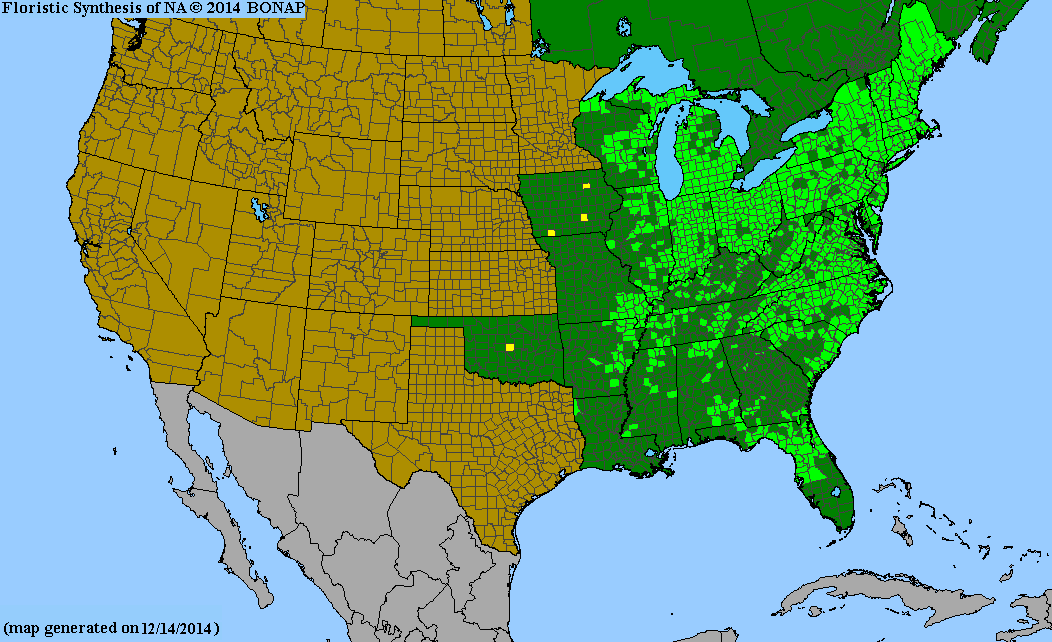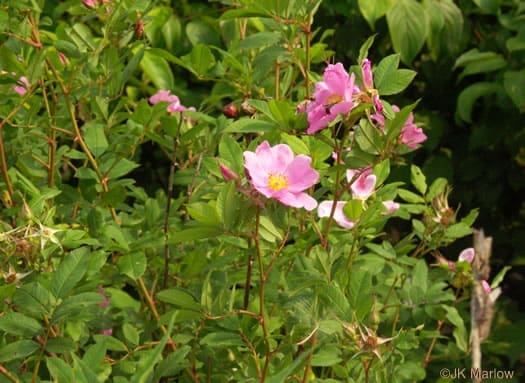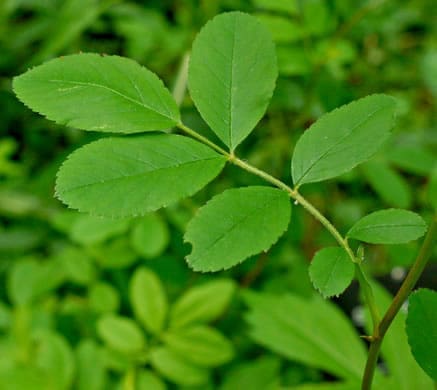Rosaceae
swamp rose
Rosa palustris
Synonyms
Rosa floridana
Rosa lancifolia
Rosa obtusiuscula
Plant Type
Shrub (less than 10 ft)
Life Cycle
Perennial
Typical Size
3-6 ft. tall
3-6 ft. wide
Tolerant of
Occasional Flooding
Inolerant of
Dry Soil
Propagation
By seed, By cutting
Plant Propagation Notes
Softwood cuttings with a heel are most successful, especially when treated with rooting hormone. Cold moist stratification is required for germination from seed.
Plant Planting Notes
Provide up to 6 ft spacing.
Plants/Diseases
No significant disease or pest issues.
Wildlife Benefits
Nectar/pollen source for pollinating insects, Fruit/seeds for birds
Leaves
Leaves alternate, pinnately compound with 5, 7, or 9 leaflets.
Flowers
Fragrant pink flowers with 5 petals and yellow anthers.
Fruit
Hips
Toxicity
No known toxicity.
Edibility
Hips are edible.

USDA Hardiness Zones
4, 5, 6, 7, 8, 9
Light Exposure
Full Sun, Part Sun/Shade
Soil Moisture
Moist
Soil Drainage
Well-drained
Soil pH
Acidic (less than 6.0)
Native in South Carolina?
Yes
Plant Native Habitat
Wet habitats such as tidal swamps, streamsides, bogs, fens, seeps, and swamp forests.
Global Conservation Status (NatureServe)
Secure (G5)
Federal Conservation Status (USFWS)
Not Listed
Distribution Notes
Common in the coastal plain and sandhills. Uncommon in the piedmont. Rare in the mountains.


